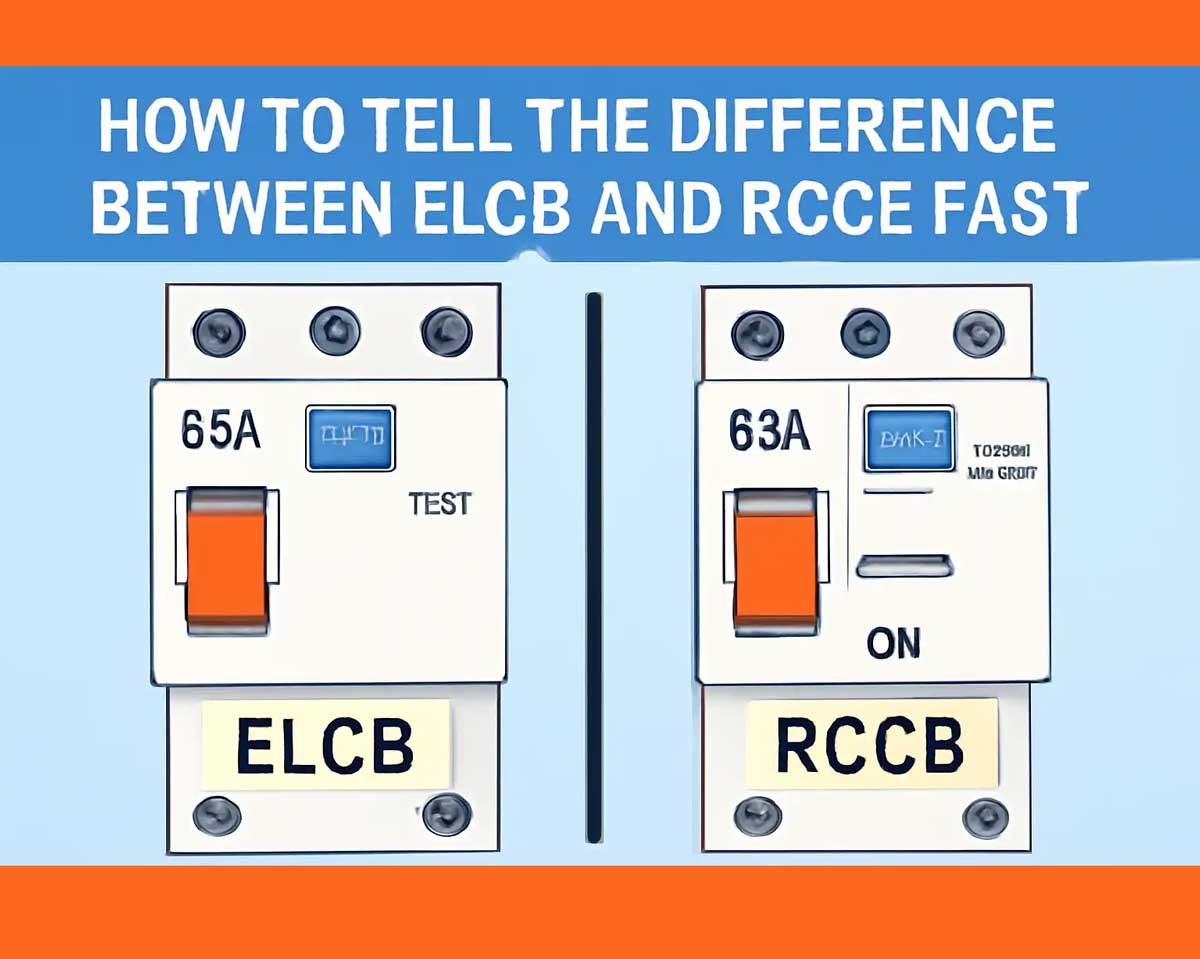
When it comes to protecting your home or office from electrical hazards, safety devices like RCCB and ELCB play a crucial role. Many people confuse these two devices or think they are the same — but in reality, they are quite different in how they detect and prevent electric shock or leakage.
In this blog, we’ll explore what RCCB and ELCB are, how they work, their key differences, and which one you should use for better electrical safety.
RCCB stands for Residual Current Circuit Breaker. It is a sensitive device designed to instantly cut off electricity when it detects an imbalance in current between the live and neutral wires.
When everything is working properly, the current flowing through the live wire and returning through the neutral wire is equal. If there’s any leakage of current to the earth (for example, through a person’s body), the RCCB immediately trips and disconnects the circuit.
RCCB works on the principle of Kirchhoff’s Current Law — the sum of currents entering and leaving a junction must be zero.
Inside the RCCB, there is a core balance transformer (CBT) that continuously monitors the current flow in both live and neutral wires.
ELCB stands for Earth Leakage Circuit Breaker. It was an older type of device used before RCCBs became popular. The main purpose of an ELCB is to detect earth leakage faults and disconnect the power supply to prevent electric shock.
However, there are two types of ELCBs:
The voltage-operated ELCB detects voltage rise on the earth line, not the actual leakage current. It only trips when a significant voltage appears between the body of the equipment and the earth terminal.
| Feature | RCCB (Residual Current Circuit Breaker) | ELCB (Earth Leakage Circuit Breaker) |
|---|---|---|
| Type | Current-operated | Voltage-operated |
| Working Principle | Detects imbalance between live and neutral currents | Detects voltage rise between equipment body and earth |
| Detection Type | Leakage current through any path | Leakage voltage through earth wire only |
| Accuracy | Very accurate (as low as 30mA detection) | Less accurate |
| Response Time | Fast (within 30 milliseconds) | Slow |
| Earthing Requirement | Works even without a perfect earth connection | Needs a perfect earth connection to function |
| Protection Level | Protects against both earth leakage and direct contact shock | Protects only from earth leakage |
| Technology Age | Modern | Outdated |
| Common Usage | Homes, offices, industries | Rarely used now |
If you are wondering which device is better for your electrical system — the answer is RCCB.
Here’s why:
✅ RCCB provides more reliable protection because it doesn’t depend on the earth connection. It detects any difference in current flow between live and neutral — whether the leakage is through earth or any other path.
✅ RCCB reacts faster — usually within 30 milliseconds — which can save lives in case of an electric shock.
✅ ELCB only detects voltage leakage through the earth wire, so if someone touches a live wire directly, it won’t offer protection.
✅ Modern electrical standards (like IEC and NEC) recommend using RCCBs instead of ELCBs for personal protection and fire safety.
✅ RCCB is compatible with modern electrical systems, while ELCB is now obsolete and rarely used in new installations.
So, in short:
RCCB = Advanced, Safer, and More Reliable
ELCB = Outdated, Limited Protection
RCCBs are ideal for both residential and commercial electrical systems.
Here are some areas where you should definitely install an RCCB:
RCCBs come in different sensitivity (mA) and current (A) ratings. Choosing the right one depends on your application.
| Usage Area | Recommended Rating |
|---|---|
| Residential Circuits | 30mA (for human safety) |
| Industrial Machines | 100mA or 300mA |
| Main Distribution Panel | 63A to 100A RCCB |
| Heavy Load Equipment | 40A / 63A with 100mA sensitivity |
👉 Tip: Always choose a branded RCCB (like Schneider, ABB, Havells, or Legrand) and get it installed by a certified electrician.
To ensure your RCCB works properly:
Both RCCB and ELCB are designed to protect against electrical shocks and fire hazards — but their working principles make a big difference.
While ELCBs are older, voltage-based devices that rely on earthing, RCCBs are advanced, current-based devices that can detect even the smallest leakage.
If you care about safety, reliability, and modern electrical standards — RCCB is the clear winner. It provides better protection for you, your family, and your electrical appliances.
All Rights Reserved , NanFixing-2025 | Design & Developed By Minhaj IT Solution